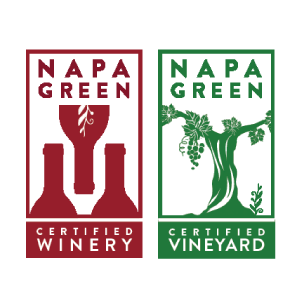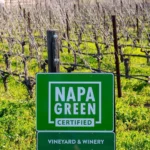What draws international winemakers to Napa Valley?
-
 Sophie Arundel | The Drinks Business
Sophie Arundel | The Drinks Business
- |
At Wine Paris last week, The Drinks Business’ Patrick Schmitt MW hosted a panel discussion exploring what draws international winemakers to Napa Valley. Joining him were Florence Cathiard, co-owner of Cathiard Vineyard in Rutherford; Jean-Charles Boisset, proprietor of Boisset Collection; and Carlton McCoy, CEO of Lawrence Wine Estates. Each had a unique perspective, having chosen Napa as the base for some of their most ambitious wine ventures.
Burgundy, Bordeaux and beyond
Opening the discussion, Schmitt noted Napa’s deep-rooted international influence. “The influential names of Napa were foreign,” he remarked, citing pioneers such as Finland’s Gustave Niebaum, Germany’s Jacob Beringer, and the Rothschild family, who partnered with Robert Mondavi to create Opus One. More recently, investment has come from houses like AXA Millésimes, Antinori, and LVMH, underscoring Napa’s global stature.
Boisset, who grew up in Burgundy but has become one of Napa’s most dynamic figures, spoke of his personal draw to the region. “The University of Burgundy will tell you that the soils of Napa Valley are very unique. Similar to Burgundy, we (Napa Valley) have six of the most unique recorded soils in history,” he said. While Burgundy was his foundation, Napa offered a different kind of opportunity. “As a Frenchman, specifically coming from Burgundy, if you move to Napa, you discover Cabernet Sauvignon,” he continued, describing his enthusiasm for Rutherford’s terroir.
Cathiard echoed this sentiment, calling Napa “an old dream.” She and her husband, Daniel, purchased their Rutherford estate in 2020. “We want to be the one with a sense of place,” she said, describing their approach as blending Bordeaux refinement with Napa’s distinct character. Their Founding Brothers blend, made with fruit exclusively from their estate, was met with early acclaim. “We had a blind tasting recently in London… Jancis Robinson preferred this wine,” she revealed.
McCoy, whose company has steadily expanded its Napa holdings, emphasised the region’s long history of quality. “For me, as an American Master Sommelier, I was always very proud of wines in Napa Valley,” he said. “It’s the region that really put the US on the map for luxury great wines.” His company’s acquisitions—including Heitz Cellar and Stony Hill—are focused on preserving Napa’s heritage. “We don’t buy them to change the names. We buy them because we already love what they’re doing.”
French investment in Napa – and vice versa
While foreign investment in Napa has often been welcomed, Schmitt posed the question of how the panellists were received upon entering such an established region. Cathiard compared her experience to Bordeaux. “When we came to Bordeaux 35 years ago, it was very snobbish, very closed,” she recalled. “In Napa, we were welcomed much more.”
Boisset took a historical view, describing the long-standing Franco-American relationship. “There’s a genuine, authentic American-French friendship… Ocean separates us, wine brings us together,” he said. His business operates on both sides of the Atlantic, and he sees cross-cultural exchange as fundamental to progress.
“This is actually the perfect electric association. This is magic.”
Napa’s appeal
McCoy, whose company recently expanded into Bordeaux with the purchase of Château Lascombes, described differing attitudes towards investment. “Americans start open-armed and warm… Whereas often the French want to see who you are first before they open the door to you,” he observed. However, he added, “Once the region recognised that we were actually there to be a part of that French culture and learn from it… they greeted us with open arms.”
For McCoy, the region’s global appeal is nothing new. “Outside investment is what made Napa Valley an exceptional region because of people’s interest and intrigue in experimentation,” he said. As a Master Sommelier, he had long admired Napa’s wines, considering it the region that put the US on the map for fine wine. “A great region is a combination of exceptional terroir and exceptional people. Napa attracted pioneers who never cut corners and understood the importance of making great wine every year.”
When the opportunity arose, McCoy partnered with the Lawrence family to acquire Heitz Cellar, a historic estate he had long respected. That investment led to others, including Stony Hill and Burgess, as family-owned wineries saw the work being done and approached them directly. “We don’t buy them to change the names. We buy them because we already love what they’re doing,” he explained. His team also sought out vineyards with untapped potential, such as Haynes Vineyard in Coombsville and Ink Grade on Howell Mountain, converting them to biodynamic farming.
McCoy sees Napa at a turning point, with a new generation bringing fresh perspectives and stylistic diversity. “There’s a bit of a renaissance in Napa,” he observed. “People are starting to understand there is more diversity in style and philosophy than what we saw in the ’90s and early 2000s.” For him, Napa’s strength has always been its openness to new ideas and investment, a tradition that continues to shape its future.
Climate change and the future of Napa
Climate change has long been a pressing issue for the wine industry, with shifting weather patterns affecting vineyard yields, ripening cycles, and overall wine styles. Rising temperatures have already begun altering traditional winemaking regions, forcing producers to adapt with new grape varieties, farming techniques, and even vineyard relocations to higher altitudes. But with the recent wildfires in California, climate change has presented an even more immediate threat.
Cathiard remarked, “Of course, there is always risk, like everywhere in the world”, taking the “high risk, high reward” outlook. However, she remained hopeful that fire prevention measures were improving. “We hope it will get better… and we cross fingers, of course.”
Boisset offered an optimistic outlook. “We have absolutely no fear of anything but for us not to evolve,” he stated. His company’s vineyards across Burgundy, Beaujolais, Napa, and Sonoma are all organic and biodynamic. “One thanks to those techniques, we make better wines, greater wines, true wines, authentic wines.” He also praised the Napa Green programme, which promotes sustainability across the region.
The role of outside investment
To conclude, Schmitt asked how much of Napa’s success today is owed to foreign investment.
McCoy was unequivocal: “Outside investment is not a new concept. It’s what made Napa Valley an exceptional region because of people’s interest and intrigue in experimentation. The Napa Valley has always been really open to outside investment—it’s our competitive edge.” He emphasised that while terroir is key, it is the people behind the wines who truly shape a region’s future. “You need to shake things up once in a while and bring people from different countries together.”
That philosophy has certainly been central to Napa’s development—and if this discussion proved anything, it’s that Napa’s global appeal shows no sign of slowing.
About napa green
About Napa Green: The Napa Green 501c3 is a global leader in sustainable winegrowing, setting the highest bar for sustainability and climate action in the wine industry. Napa Green facilitates whole system soil to bottle certification for wineries and vineyards, and provides the expertise, boots-on-the-ground support, and resources to continually improve. Learn more at https://napagreen.org/participating-members/.
Anna Brittain
Napa Green
+1 805-636-3329
email us here
Visit us on social media:
Facebook
LinkedIn
Instagram



